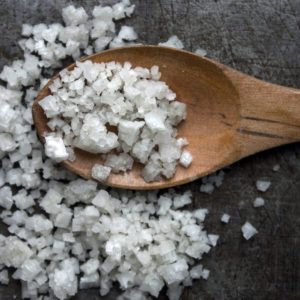There’s more to them than nut butter. Get baking, cooking and snacking with these yummy kernels.
Almonds
(2 410 kJ/100g)
Not actual nuts (they are the seed of the almond tree’s fruit), almonds are off-white in colour, tear-dropped in shape and covered with a ridged brown skin. The ones we consume are categorised as ‘sweet’, while the ‘bitter’ variety are used to make almond oil. Bitter almonds are pretty toxic, containing high levels of cyanide. Although they are an absolutely delicious (not to mention guilt-free) snack, they are also great for home-made nut flour. Choose raw, unflavoured and whole nuts. Season and toast them yourself, allow to dry out completely and then process.
Brazil nuts
2 745 kJ/100g
The soft texture of these nuts comes from their high content of good fats. They are white, spotted with streaks of brown skin left over after shelling. They are full of magnesium, which helps you absorb energy from food. They also contain copper, zinc and phosphorus. Although great in salads and desserts, they really shine when used to make dairy-free milk and cheese (because of their buttery texture). Make your own vegan Parmesan by processing 1 cup Brazil nuts, ¼ cup nutritional yeast and ½ tsp garlic salt. Pour into a sealed container and store in a dry place or refrigerate.
Cashews
2 315 kJ/100g
These sweet things are a wonderfully creamy substitute in sauces and toppings if you are lactose intolerant. Because of their high fat content, when processed they make a velvety mixture that is a secret weapon in vegan cream-based soups, dips and drinks.
Hazelnuts
2 630 kJ/100g
The slightly bitter dark skin hides a light nut with a mild flavour. Famous for their use in the spread Nutella. Get rid of that pesky outer skin by roasting them and then rubbing them between a clean kitchen towel. If ever you want to add a satisfying crunch to your food, this is the nut to reach for. They are especially good in pastry-based treats, pasta or anything containing mushrooms.
Macadamias
3 000 kJ/100g
Native to Australia, these spherical nuts are now available worldwide. They have a sweet taste, but go rancid quickly, so store in the fridge. Their luxuriously creamy texture makes them the ultimate dessert nut. You can also use them to add a bit of sweetness to bitter greens and pestos. They can be quite costly, though, so we recommend combining them with other nuts when you are going to be using them in large quantities.
Pecans
2 890 kJ/100g
These favourites have a rich flavour. When the dark brown shell is cracked, it reveals a textured nut split into halves. They do also go rancid quite quickly, but there’s good new; they freeze amazingly! Their slightly bitter flavour makes them useful when you want to balance out any sickly sweetness in rich desserts and sweets.
Pistachios
(2 345 kJ/100g)
These small, green-tinged nuts are related to the cashew and commonly used in Middle Eastern cuisine (they are the key ingredient in dukkah). Shells split open when they are mature, revealing the distinctive light green flesh. Their meaty flavour and firm texture make them excellent as a bit of a crunch in a salad, rounding our bars and squares, and to add something special to dips.
Walnuts
2 735 kJ/100g
Providing great benefits for heart health and also reducing inflammation in the body (due to their high levels of omega-3, various flavonoids and mono-unsaturated fats), they are soft and a little bitter. The nuts each have two lobes that are partially attached to each other. Worried about that dry-mouth feeling caused by high amounts of tannins? Toast them before adding them to a carrot cake, winter veggies (especially beetroot) or even your morning bowl of oats.




